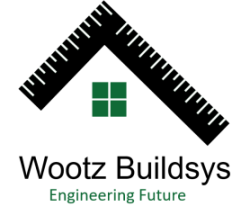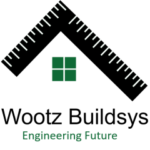
Pre-Engineered Building (PEB) structures have emerged as a transformative solution, revolutionizing the way schools are designed and constructed. These innovative structures not only provide efficient and cost-effective spaces for learning but also contribute to creating vibrant and inspiring environments for students and educators alike. Here, we’ll explore the myriad benefits of PEB structures for schools and understand how they are shaping the future of education.
Efficiency with PEB Structures
PEB structures for schools are characterized by their efficiency in both construction and operation. Engineered with precision off-site, PEB components are manufactured using advanced technology and machinery, ensuring accuracy and quality. This streamlined manufacturing process significantly reduces construction timelines, allowing schools to be completed in a fraction of the time compared to traditional building methods. Additionally, the modular nature of PEB structures offers flexibility and adaptability, enabling easy expansion or modification as per the evolving needs of the educational institution.
Creating Inspiring Learning Environments
One of the key advantages of PEB structures for schools is their ability to create smart and inspiring learning environments. With customizable designs and layouts, schools can tailor PEB structures to accommodate various educational activities and programs. Whether it’s classrooms, laboratories, libraries, or administrative offices, PEB structures offer versatile spaces that promote collaboration, creativity, and innovation. The abundance of natural light, ample ventilation, and modern amenities enhance the overall learning experience, fostering a conducive environment for student growth and development.
Promoting Sustainability and Environmental Responsibility
In an era of increasing environmental awareness, PEB structures for schools stand out for their sustainability and eco-friendliness. Constructed using high-quality steel components, PEB structures are inherently durable and resistant to corrosion, ensuring longevity and minimal maintenance requirements. Furthermore, PEB construction minimizes material waste and reduces the carbon footprint associated with building projects. Energy-efficient features such as insulated roofing panels and energy-efficient lighting systems further enhance sustainability, contributing to lower operational costs and environmental conservation.
Enhancing Safety and Structural Integrity
Safety is paramount in educational environments, and PEB structures prioritize the well-being of students, staff, and visitors. Engineered to meet stringent safety standards and building codes, PEB structures offer superior structural integrity and resilience against natural disasters such as earthquakes and hurricanes. Additionally, the use of fire-resistant materials and advanced security systems ensures the safety and security of occupants, providing peace of mind for school administrators and parents alike.
Leveraging Technology for Educational Excellence
PEB structures for schools integrate seamlessly with modern technologies, providing opportunities for enhanced teaching and learning experiences. From state-of-the-art audiovisual systems and interactive whiteboards to high-speed internet connectivity and smart classroom solutions, PEB structures support the integration of digital tools and resources into the curriculum. This technology-driven approach fosters digital literacy, critical thinking, and problem-solving skills among students, preparing them for success in the digital age.
Conclusion
PEB structures offer a myriad of benefits for schools, ranging from efficiency and cost-effectiveness to sustainability and safety. By embracing PEB technology, educational institutions can create smart, inspiring, and future-ready learning environments that promote academic excellence and student success. With their versatility, durability, and innovation, PEB structures are transforming the way we design, build, and experience schools, paving the way for a brighter future in education.
Incorporating PEB structures into school construction projects ensures efficient use of resources and promotes environmental sustainability. These smart and adaptable structures not only enhance the learning experience for students but also contribute to the overall success and longevity of educational institutions. With their numerous benefits and innovative features, PEB structures are the ideal choice for schools looking to embrace the future of education.
Frequently Asked Question (FAQs)
Q. What are the advantages of using PEB structures for school construction projects?
PEB structures offer numerous advantages for school construction projects, including efficiency, cost-effectiveness, sustainability, versatility, and safety. These structures are engineered to meet specific project requirements and can be customized to accommodate various educational activities and programs. Additionally, PEB structures promote environmental responsibility and contribute to creating inspiring learning environments for students and educators.
Q. How long does it take to construct a school using PEB structures?
The construction timeline for a school using PEB structures depends on various factors, including the size and complexity of the project, site conditions, and permitting requirements. However, PEB structures are known for their rapid construction timelines compared to traditional building methods. With off-site fabrication and modular assembly techniques, schools can be completed in a fraction of the time required for conventional construction projects.
Q. Are PEB structures environmentally friendly?
Yes, PEB structures are environmentally friendly for several reasons. The efficient use of materials and resources during the manufacturing process minimizes waste and reduces the overall carbon footprint of the construction project. Additionally, the energy-efficient features of PEB structures, such as insulated panels and energy-efficient lighting systems, help lower energy consumption and promote sustainable building practices.



